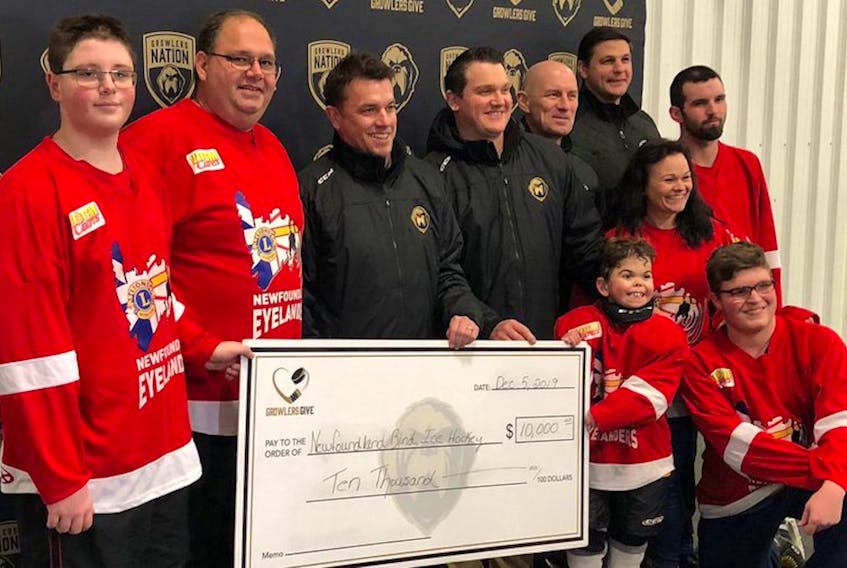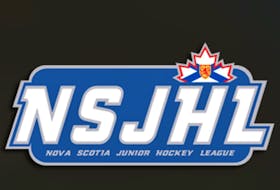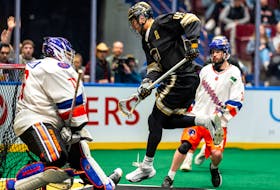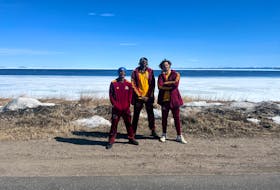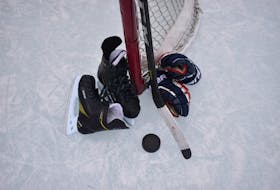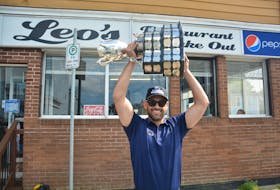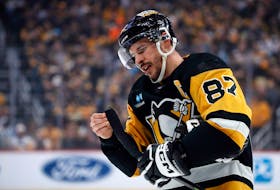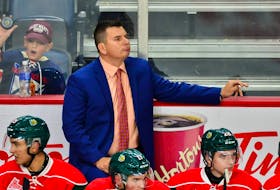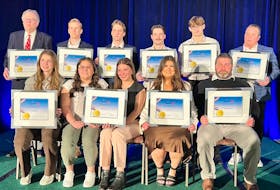There is all kinds of hockey being played at the Paradise Double Ice Complex these days.
There’s the standard ice hockey, with Paradise Minor Hockey Association minor games and practices on the facility’s A rink; the Canadian Tire Cup international para hockey tournament being held at the B rink; and also blind hockey.
The latter may be the least known, but it is said to be the fastest-growing of the six disciplines for hockey players dealing with a disability. The others are para hockey (formerly sledge hockey), special hockey (for those with cognitive issues), deaf/hard of hearing hockey, Warrior hockey (an American program for wounded and injured military veterans) and standing amputee hockey.
On Thursday at the Complex, Canadian Blind Hockey and Newfoundland Blind Ice Hockey hosted a “Learn to Skate and Try Blind Hockey” session with students from this province who are blind or partially sighted.
The organizers were helped by players from the Queen Elizabeth Pioneers high school team and got a big financial boost from the ECHL’s Newfoundland Growlers, who donated $10,000 to the provincial blind hockey group.
Organized blind hockey has been around almost four decades, but the sport has really taken off in the last few years. That includes here in Newfoundland, where Conception Bay South resident Steve Joy began promoting blind hockey in 2017, That was after his son Brandon, who has retinitis pigmentosa, which leads to degeneration of peripheral vision, attended a blind hockey camp in Vancouver and enjoyed the experience.

The key to blind hockey is a specially adapted puck that is made of steel and contains ball bearings so that it can heard as it moves along the ice. It also both bigger and slower than a traditional vulcanized rubber puck.
As well, the nets that are used are a bit shorter than normal, the idea that being that it helps players keep their sticks lower.
According to a posting at canadianblindhockey.com, all athletes competing at the recreational level must have some visual impairment, while those participating at the competitive level need to be classified as legally blind, which is defined as having approximately 10 per cent vision or less.
Any player can play forward or defence, but skaters with the most vision typically play forward and participate in all three zones, while skaters with less vision or no vision will play defence, often remaining in their own end no matter where the puck might be.
All goaltenders have extremely low vision or are completely blind, but in any case, all goalies wear a blindfold.

As you might expect, communication is a key. There is a lot of stick tapping to let teammates know each other’s location and talk to help those with less vision be better oriented on the ice.
The Canadian National Blind Hockey Tournament takes place annually in Toronto each March, and features children, youth, low vision/development, open and select divisions.
Joy says local blind hockey players — their teams are cleverly named the Newfoundland Eyelanders — practise every Sunday morning at the Robert French Arena in Kelligrews in preparation for the national tourney, which is held at Ryerson University’s Mattamy Athletic Centre, formerly Maple Leaf Gardens.
You can contact the provincial blind hockey organization by email at [email protected]. For more information about the game, go online to canadianblindhockey.com
Twitter: @telybrendan


